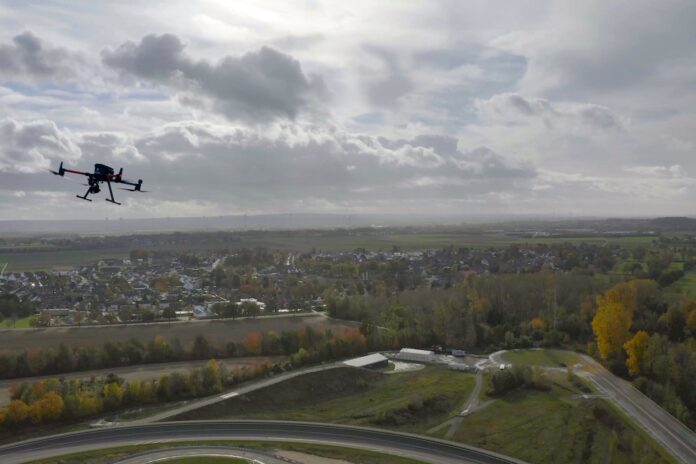They successfully tested safe sky corridors for drones using intelligent aspects of the mobile network.
Vodafone and Ericsson say the technological breakthrough will allow professional drone operators, critical national infrastructure providers and emergency services to deliver medical, commercial and industrial supplies safe in the knowledge that they will arrive at the correct destination on time while remaining connected to the mobile network.
Proof of concept
In a proof of concept trial conducted this month at Vodafone’s 5G Mobility Lab in Aldenhoven, Germany, the companies used intelligence from the network to produce coverage maps, which enabled the drone to stay in areas with a good signal up in the air.
They also collated anonymised mobile user information so the drone could avoid heavily crowded areas on the ground. They did this using information obtained via Vodafone’s Network Exposure Layer which makes network data easy to use, but secure.
APIs are the key
Vodafone can provide these two key pieces of information to trusted third parties via Application Programming Interfaces (APIs) to enable users to quickly and easily plot a pre-determined path for the drone, ensuring constant contact with the control centre, even when out of sight.
In this scenario, Vodafone could offer a hospital access, via an API, to non-sensitive network information to send a drone to a scene of an accident.
As part of a separate test simulation, Vodafone in Spain recently flew a lightweight defibrillator to the scene of a cardiac arrest patient using a drone controlled by 5G.
Data-rich asset
Vodafone Group’s Chief Technology Officer Johan Wibergh said: “The mobile network is a data-rich asset that can be responsibly and securely utilised to aid society. We are evolving our software-driven, intelligent network into a powerful platform that can deliver new digital services. The responsible use of drones is just one such example but there will be many more.
“APIs will speed up the adoption of drones for commercial and public sector use, bringing many benefits such as being able to assess fires, deliver medical supplies, and help businesses survey hazardous conditions like construction sites, power lines and our own mobile masts, quicker and more safely.”
Erik Ekudden, Senior Vice President, CTO and Head of Group Function Technology of Ericsson, added: “Drones are immensely powerful tools for many businesses and we are only scratching the surface of the possibilities they open up, which makes our collaboration with Vodafone all the more exciting.
“Smarter network capabilities on our reliable mobile network will enable key industries such as healthcare, construction, and agriculture to accelerate site deployment, reduce health and safety hazards, and help save lives. With this technology, service providers can expand their cellular IoT services for enterprises and confidently meet regulatory guidelines. This is another milestone in Ericsson’s partnership with Vodafone, as we continue to evolve our network and meet the diverse needs of fundamental industries.”
Telco as a Service (TaaS)
Cellular-connected drones form part of Vodafone’s multi-year journey to redefine its technology architecture on a ‘Telco as a Service’ (‘TaaS’) model, based on platforms that deliver new software, video and data applications at scale (see page 8 of the Vodafone Group half-year results release here). By extracting intelligence from its converged pan-European and African networks, combined with the use of open source software components, Vodafone can offer developers and businesses a cost-effective and quick way of automating services for millions of customers.
Video tuning
As part of the trial, Vodafone and Ericsson also explored ways to use the network to control key features of the drone such as being able to improve the definition of the video instantly without impacting other services.
This is particularly useful in situations where the video is not required for the entire mission, like being able to inspect a suspension bridge or check on the condition of a mountaineer.
This trial builds on work carried out by Vodafone and Ericsson in 2018, in which they worked to mitigate possible interference from the drone when it received signals from multiple mobile sites.



